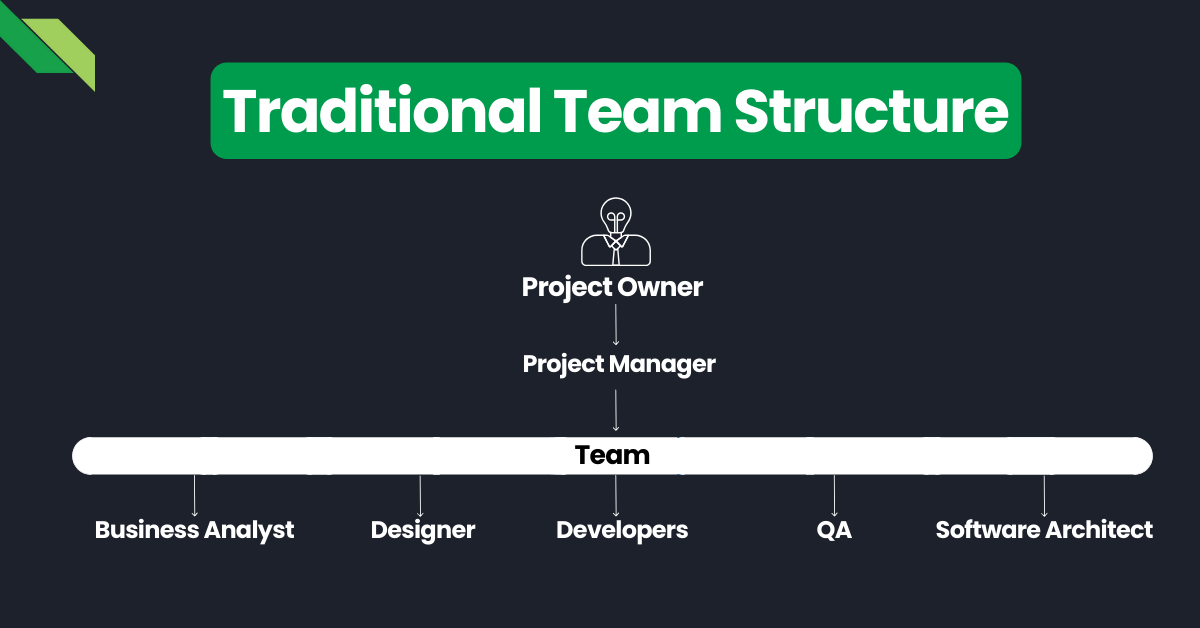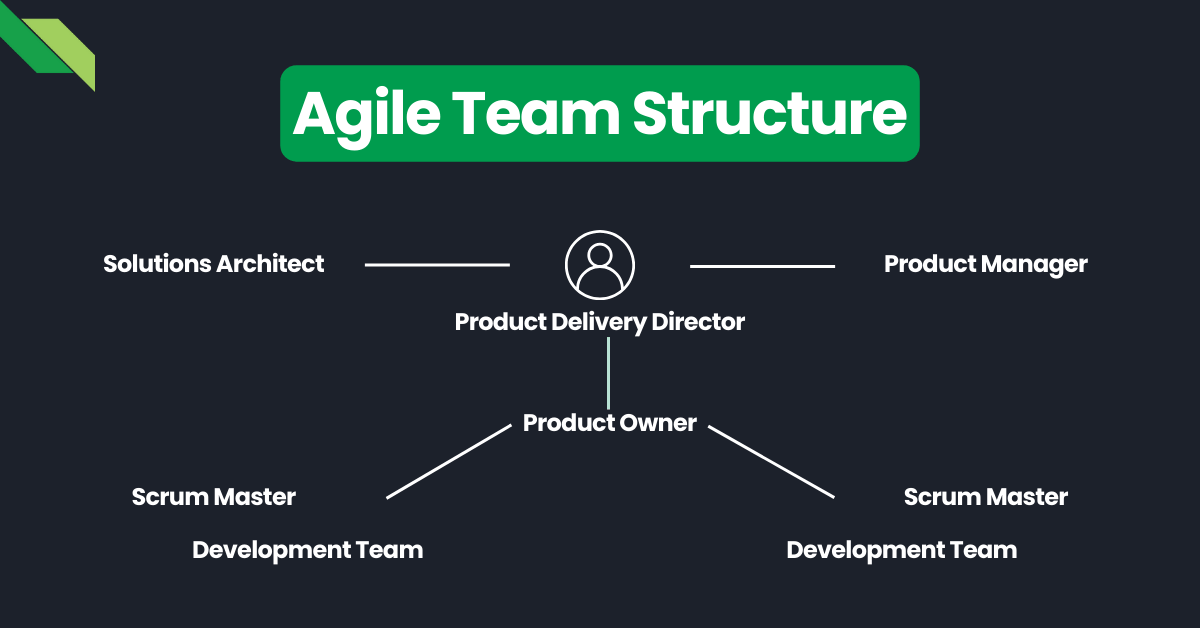Last Updated on 2025-05-19
The structure of your software development team is pivotal for several reasons. It dictates the flow of communication and impacts project efficiency. Ultimately, it influences the quality of your final product.
A well-structured team can adapt to challenges and trends in the industry. They can also scale according to your project requirements and consistently produce high-quality, stable products.
To succeed, update your current software development team structure through our tips.
Common Approaches to Software Development Team Structure
There are three primary approaches to team structures: Generalists, Specialists, and Hybrids.
Generalist
Your team comprises team members with a broad set of skills across various domains. This structure fosters flexibility and is particularly effective for small teams or startups.
Suited for:
- Early-stage projects requiring versatility
- Teams with evolving roles and responsibilities
- Environments where team members wear multiple hats
Specialist
Consists of individuals with deep expertise in specific areas. This approach ensures high-quality work in each domain but requires more coordination.
Suited for:
- Large projects with well-defined roles
- Teams needing in-depth knowledge in areas like security, UI/UX, and database management
- Projects where quality in specialized areas is critical
Hybrid
This structure combines generalists and specialists, bringing the best of both worlds. It allows for flexibility and specialized expertise.
Suited for:
- Growing startups transitioning from a generalist to a specialist approach
- Projects with a core focus but requiring broad skills in the implementation phase
- Teams looking for balance and adaptability
Software Development Team Structure Philosophies
With the three approaches, there are two main philosophies when it comes to software development team structures: traditional and agile.
Traditional Development Team Structure

The traditional structure typically features defined roles such as Project Managers, Developers, QA Engineers, and UI/UX Designers. It’s hierarchical and well-suited for projects with clear deliverables and timelines.
Suited for:
- Large-scale enterprise projects
- Environments where clear hierarchy and defined roles are necessary
- Projects with fixed scopes and requirements
Agile Team Structure

Agile teams are cross-functional, with members collectively responsible for the project’s success. This structure promotes flexibility, rapid iteration, and close collaboration.
Suited for:
- Projects requiring adaptability and fast pivoting
- Teams that value continuous feedback and iteration
- Environments where the end user’s needs can evolve over time
Offshore Development Team Structure
Offshore teams can be structured in various ways but are often aligned with the agile methodology to accommodate the physical distance and time zone differences.
Suited for:
- Companies looking to scale quickly and affordably
- Projects where access to a global talent pool can bring a competitive advantage
- Teams needing to operate around the clock or across different markets
At Full Scale, we’ve perfected the art of integrating offshore teams seamlessly into your project, ensuring they become an extension of your in-house team.
Factors to Consider When Choosing a Team Structure
The choice between Agile and Traditional methodologies depends on several factors, including:
- Project Scope: Define what you need to accomplish and match the team structure to the project’s complexity and size.
- Skills and Expertise: Assess the skills required for the project and decide if a generalist, specialist, or hybrid team can best meet those needs.
- Budget: Consider your budget constraints when choosing between local, onshore, or offshore teams.
- Timeline: Tight deadlines might favor an agile approach, while longer timelines could accommodate traditional structures.
- Cultural Fit: Ensure the team structure aligns with your company’s culture and values, especially when integrating offshore teams.
Key Roles and Responsibilities within a Software Development Team
Regardless of the team structure or methodology chosen, certain roles are essential for the smooth functioning of a software development team:
- Project Manager: Oversees the project from initiation to closure, ensuring it meets deadlines, stays within budget, and aligns with the business goals.
- Software Developers: Code the product, bringing the vision to life.
- QA Engineers: Guarantee the quality of the product through rigorous testing.
- UI/UX Designers: Ensure the product is intuitive and user-friendly.
- Business Analysts: Bridge the gap between IT and the business to ensure the software meets user needs.
Full Scale Can Sculpt Your Ideal Team Structure
At Full Scale, we understand the complexities of building and managing a successful software development team.
Our offshore staff augmentation solutions provide businesses access to a vast pool of talented software developers, designers, and project managers. Full Scale will enable you to scale your team quickly and cost-effectively.
How Full Scale Helps with Your Software Development Structure
- Rapid access to pre-vetted software development talent
- Flexible engagement models to suit your project needs
- Expertise in both Traditional and Agile methodologies
- Dedicated account managers to ensure seamless collaboration
- Ongoing training and career development for our team members
Our expertise in integrating offshore teams ensures that you get the benefits of global talent while maintaining the cohesiveness and agility of an in-house team. Reach out to us, and let’s build the foundation for your project’s success together.
Build Your Software Development Team Now

Matt Watson is a serial tech entrepreneur who has started four companies and had a nine-figure exit. He was the founder and CTO of VinSolutions, the #1 CRM software used in today’s automotive industry. He has over twenty years of experience working as a tech CTO and building cutting-edge SaaS solutions.
As the CEO of Full Scale, he has helped over 100 tech companies build their software services and development teams. Full Scale specializes in helping tech companies grow by augmenting their in-house teams with software development talent from the Philippines.
Matt hosts Startup Hustle, a top podcast about entrepreneurship with over 6 million downloads. He has a wealth of knowledge about startups and business from his personal experience and from interviewing hundreds of other entrepreneurs.





